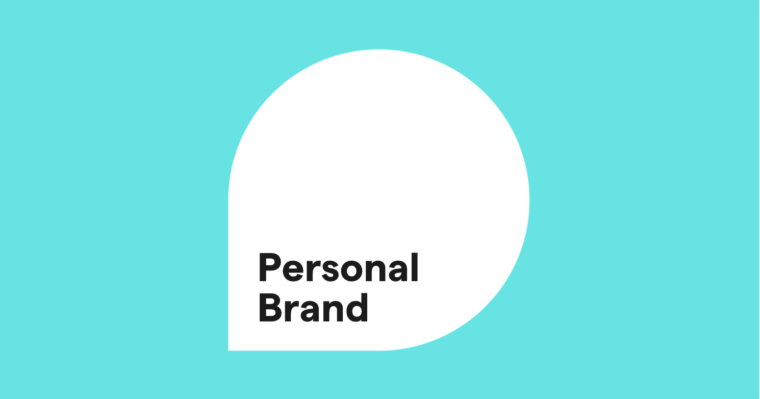
In today’s competitive professional landscape, a personal brand is more than just a buzzword—it’s your unique digital fingerprint. Establishing a strong personal brand is crucial for professionals aiming to stand out, build credibility, and invite meaningful opportunities.
You can enhance your professional identity and career trajectory by strategically sharing your skills, values, and voice. A personal brand lets you clearly communicate who you are, your distinctive strengths, and the value you bring to your field.
Whether you’re new to personal branding or looking to refine your current public-facing presentation, this guide will equip you with the knowledge to effectively showcase what makes you uniquely and authentically you.
Table of Contents
- What is a personal brand?
- Key elements of a personal brand
- Step-by-step guide to creating a personal brand
- Building your personal brand online
- Growing and maintaining your personal brand
- Common mistakes to avoid in personal branding
What is a personal brand?
A personal brand is your unique professional identity. From how you communicate to your skills, values, and relationships, a personal brand is your reputation. While social media is a major channel to express your brand, a personal brand is far more than a LinkedIn profile or Instagram feed.
Why every professional needs a personal brand
Developing a personal brand is essential for professionals across all industries. Here’s why it’s valuable:
- Career growth: A well-crafted brand can open doors to new roles, promotions, and partnerships by showcasing your value and strengths.
- Networking opportunities: A personal brand connects you with people who share your values, industry interests, or work goals, enabling you to build a network of valuable contacts and mentors.
- Credibility and trust: With a strong brand that’s transparent and consistent, you’re more likely to become a trusted authority in your field. Others are more likely to engage with and support someone whose expertise they recognize and respect.
Key elements of a personal brand
Your unique value proposition
Your unique value proposition (UVP) is the foundation of your personal brand. It’s what differentiates you from the hundreds or thousands of others in your field and highlights the distinctive strengths, skills, experiences, and passions you personally bring to the table. To identify your UVP, ask yourself questions like:
- What skills do I excel in, and how do I demonstrate them?
- What aspects of my background make my perspective unique?
- How do my personal passions and values align with my work?
Reflecting on these questions will clarify what makes you memorable, what resonates with others, and what aligns with your career goals. Think of your UVP as a cornerstone that supports everything else in your brand. If you need guidance to get started on your UVP, you can reference this detailed overview.
Your personal brand story
A powerful brand involves storytelling that shows who you are beyond a list of job titles and workplaces. An effective story doesn’t just list achievements; it shares the motivations, struggles, and key milestones that define your career journey.
For example, consider the challenges you’ve overcome and how these experiences shaped your skills and goals. Did a particular experience ignite your passion for your field? Was there a mentor who influenced your approach? How have your skills and goals changed as your personal story entered new chapters?
Consider integrating these elements and your unique career arc into your personal bio. Sharing these moments allows others to connect with your journey emotionally and adds authenticity to your brand.
Your brand’s core values
Values are the guiding principles that define your brand’s mission and influence how others perceive you. For example, if your values include innovation and integrity, these should be evident in your actions and interactions.
Take the time to outline a few key values that align with your mission and professional goals. Whether you prioritize creativity, integrity, collaboration, or continuous learning, these values help create a consistent and authentic voice that guides your actions and decisions.
Your brand’s visual identity
Visual consistency reinforces your brand and makes it more recognizable. From your best headshots to your logo, color schemes, and fonts you might use on your LinkedIn and personal website, each visual element should express a cohesive brand personality that aligns with your professional goals.
For instance, if your brand emphasizes creativity, opt for visuals that are bold and expressive while also clearly communicating your unique authority in your industry. Your visual identity should be cohesive across all platforms, creating a professional and trustworthy impression.
Step-by-step guide to creating a personal brand
1 Identify your target audience
An effective personal brand speaks to a specific audience. Start by defining who you want to reach—potential employers, clients, peers, or industry influencers—and research what they value. How do you see your values aligning? Where do you see your unique perspective offering something to expand or refine these shared values?
Knowing your audience allows you to shape your brand’s message to resonate with their needs and preferences. For instance, if your audience is tech entrepreneurs, your brand should emphasize innovation and problem-solving, showcasing skills and qualities that cater to their needs while ensuring that your unique approach offers something that won’t be found anywhere else.
2 Define your unique value proposition
Figure out what makes you unique. What sets you apart from your colleagues? Take an inventory of your skills, strengths, and accomplishments. Reflect on any distinctive experiences, passions, or qualities that have helped define your professional identity. Craft a personal UVP reflecting your purpose, goals, and vision from this.
Remember: A good UVP is concise yet powerful, helping guide your decisions and serving as a reference point for your brand.
Here’s an example:
- Enhancing team success by providing clarity, efficiency, and strategic insight. Through a hands-on approach and proven methods, I help businesses minimize waste, increase productivity, and cultivate continuous improvement—delivering significant results.
3 Craft your brand story
Your brand story should be cohesive, highlighting your experiences, skills, and values. Begin by outlining the steps that brought you to your current role, the challenges you’ve faced, and the goals you’ve achieved.
Make your story relatable by sharing the moments that inspired or challenged you and what you learned along the way. Remember, a compelling brand story is honest and relatable—it’s a journey of growth and learning, not merely a list of accomplishments.
4 Build your online presence
Your online presence is often the first impression others will have of your brand. Start with LinkedIn, crafting a headline and summary that capture your unique strengths and expertise. On social media, select platforms where your target audience is most active.
Consider creating a personal website or blog that serves as a central hub for your brand. A strong website might include sections for your résumé, portfolio, bio, mission, testimonials, and links to social media profiles, allowing visitors to gain a comprehensive understanding of who you are all in one place.
5 Network and build relationships
Networking is essential to building a strong brand. Attend industry events, join relevant online communities, and engage with your peers regularly. But simply showing your face isn’t the solution—be intentional about who you connect with, focusing on people who align with your goals and values.
Networking requires time and energy from you—respect that. This is how you will get the most value out of networking events. Networking allows you to establish yourself as a thought leader, while connections made through networking often lead to collaborative opportunities and referrals that can enhance your credibility.
6 Share thought leadership content
Sharing thought leadership content positions you as an expert and a valuable resource in your field. Write articles, create videos, or share insights about your industry’s latest trends, challenges, or innovations. You could also consider hosting webinars or contributing guest posts to reputable blogs.
Regularly sharing valuable insights strengthens your brand and attracts followers who value your expertise, expanding your professional reach.
7 Monitor and evolve your brand
A personal brand isn’t static—it should evolve as you grow. Regularly evaluate your brand to ensure it aligns with your goals and stays relevant. This may involve adjusting your brand story, updating your visual identity, or refreshing your values as your career progresses.
Being adaptable shows that you’re in tune with professional growth and responsive to industry changes, helping you maintain an authentic and dynamic brand.
Building your personal brand online
Optimizing your LinkedIn profile
LinkedIn is a powerful platform for building and showcasing your brand. Start with a clear and concise headline, capturing your role and strengths. Use the summary to tell your brand story, focusing on your accomplishments and values.
Feature relevant work samples to showcase tangible deliverables and achievements and seek endorsements from colleagues to add credibility. LinkedIn’s features, like publishing articles and participating in groups, can further expand your influence and establish you as an industry expert.
Leveraging social media
Beyond LinkedIn, social media offers additional platforms to extend your brand’s reach. Each platform has its strengths: X (as well as its competitor Threads) is ideal for sharing quick insights and industry news, while Instagram allows for more visual storytelling.
Use social media strategically by posting content that reinforces your brand message and engaging with followers through comments and discussions. Be sure to familiarize yourself with the platform(s) where your audience is most present. Social media can connect you with new audiences, help you stay current on trends, and showcase your personality.
Creating a personal website or blog
A personal website allows you to create a lasting impression by consolidating your brand in one central place. Include a portfolio, blog, testimonials, and an “About Me” or bio section to provide a complete picture of your expertise and personality.
Regularly update your blog to share industry insights or case studies, reinforcing your expertise. Your personal website is a professional resource that strengthens your brand and offers easy access to all relevant information for clients, employers, or collaborators.
Growing and maintaining your personal brand
Building relationships
Make it a priority to engage in industry communities, attend conferences, and follow up with connections. Building strong relationships can lead to mentorship opportunities, strong partnerships, and new career paths. Familiarity with the interconnections of your network will enhance your brand’s influence and expand your professional influence.
Consistent content creation
Creating consistent content reinforces your brand as a credible source, positioning you as a unique thought leader within your industry. Regularly share insights on industry trends, challenges, or new strategies, whether through articles, infographics, videos, or podcasts.
Consistency is critical to staying relevant and growing as your industry evolves.
Public speaking and events
Public speaking is a powerful way to amplify your brand. Seek opportunities to speak at conferences, workshops, or webinars to share your knowledge and interact with live audiences. It highlights your expertise and communication skills, allowing you to establish yourself as an industry authority and connect with potential collaborators, clients, and more.
The more you hone your personal brand and express your unique positioning and experience within and beyond your field, the more you will be sought out to speak at such events.
Continuous learning
Continually improving your skills is essential to maintaining a competitive brand. Invest in learning through workshops, certifications, or industry-specific courses. Growth-oriented professionals are more credible and demonstrate a commitment to excellence, which strengthens your personal brand over time.
Common mistakes to avoid in personal branding
Inconsistency across platforms
Consistency in messaging and tone is critical for a successful brand. Though different platforms are home to slightly different audiences and demographics, inconsistent language or imagery between platforms can confuse your audience and weaken your brand’s impact.
Whether online or offline, each aspect of your brand should reflect the same core message, creating a cohesive and memorable impression.
Ignoring online reputation management
Regularly monitor reviews, comments, and mentions related to your brand, and respond thoughtfully to feedback. Addressing negative feedback professionally shows accountability and commitment to improvement. Keeping track of your online reputation protects your brand’s integrity and ensures a positive perception. When you take the high road in response to all feedback, that shines through to your audience.
Personal brand FAQs
What is the difference between a personal brand and a professional reputation?
A personal brand is a proactive representation of who you are and what you stand for, while a professional reputation is what others perceive based on your actions.
How do I find my personal brand’s unique value proposition?
Reflect on your skills, experiences, and values to determine what sets you apart from others in your field.
Do I need a personal website to build my personal brand?
While not mandatory, a personal website offers a dedicated space to showcase your work, achievements, and professional journey.
How can I ensure consistency in my personal brand across platforms?
Use similar language, tone, and visuals (such as headshots and logos) on all professional and social media platforms.
How often should I update my personal brand?
Regularly evaluate your brand, especially after major career changes, to ensure it aligns with your current goals and industry trends.






